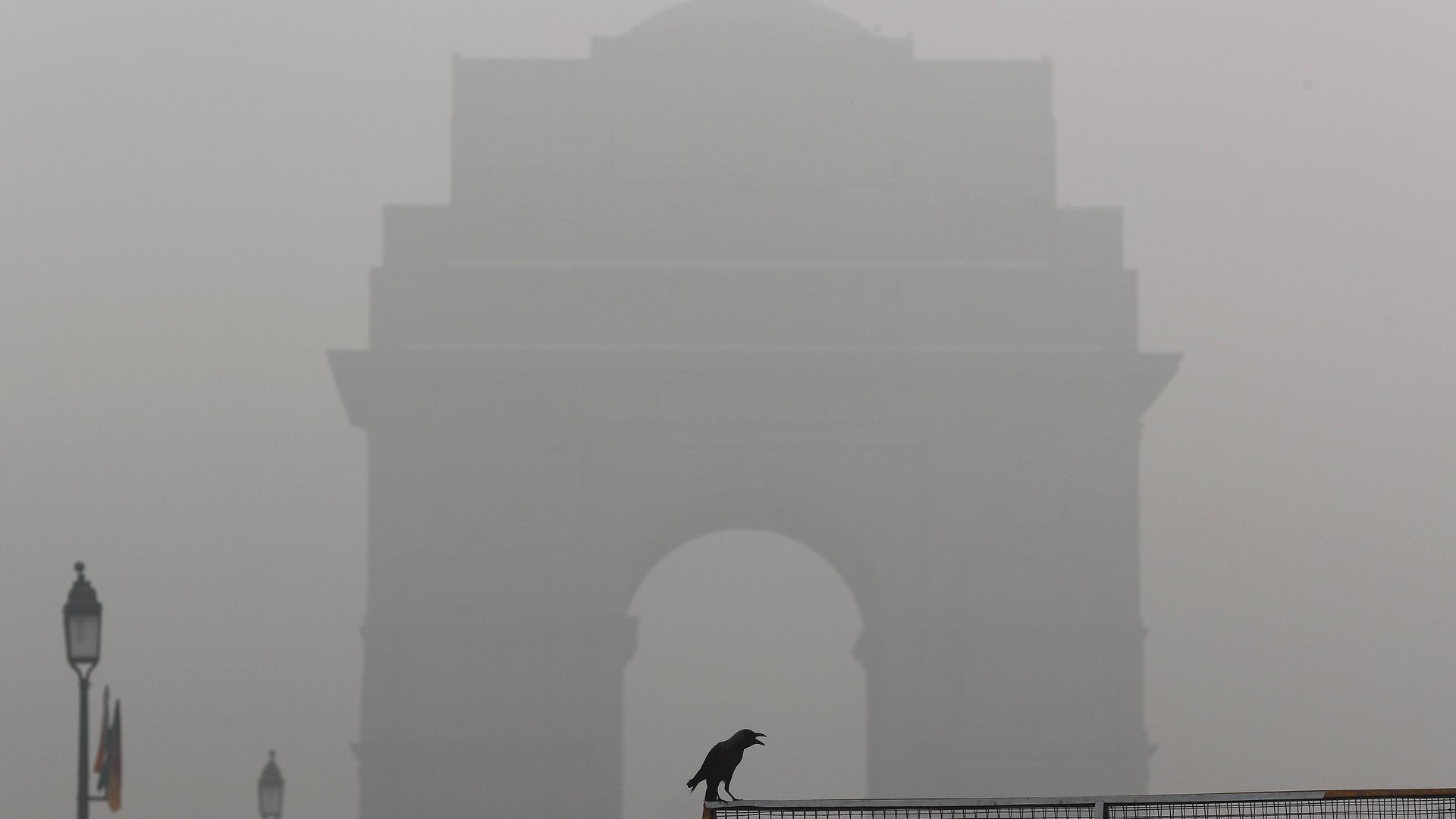Brace yourself Delhi, it may only be the beginning of the toxic air season
The Indian capital is enveloped in an apocalyptic smog, but here’s what’s scarier: The worst may be yet to come.


The Indian capital is enveloped in an apocalyptic smog, but here’s what’s scarier: The worst may be yet to come.
At 4pm yesterday (Nov. 3), the 24-hour average air quality index (AQI) in New Delhi stood at 494, the highest since Nov. 6, 2016, when it was 497. By 11am, the real-time AQI at monitoring stations across the city was 999—16 times the permissible level.
Considering that Delhi and the National Capital Region (NCR) struggles the most between Oct. 15 and Nov. 15 every year due to stubble burning in the neighbouring states of Punjab and Haryana, residents will be well-advised to brace for worse.
The deterioration in air quality in the past few days offsets the gains clocked in October.
The average air quality index (AQI) for October 2018 was 285, against this year’s 239. AQI of 201-300 implies “poor” air quality, according to the central pollution control board (CPCB).
On the night of Diwali (Oct. 27), air pollution was at its lowest in the past three years, according to CPCB data. The numbers show that these levels have progressively fallen since 2016. Yet, it was also the season’s first pollution peak due to the bursting of firecrackers.
The day-after-Diwali situation in 2019, too, remained better than in previous years, according to CPCB data.
Yet, Delhi NCR is still in the throes of a public health emergency right now.
Apocalypse
Yesterday, pollution levels in Delhi remained in the “severe category,” with the AQI measuring PM 2.5 and PM 10 at 475 and 648, respectively. The prescribed standard for PM10 and PM2.5 is a maximum of 100 and 60 respectively.
PM 2.5 refers to particulate matter with a diameter of 2.5mm and PM 10 has a diameter of 10mm. When inhaled, both these pollutants can cause serious harm to the body, including bronchitis, asthma, and heart attacks. Delhi chief minister Arvind Kejriwal acknowledged the crisis in a tweet.
Meanwhile, a high-level meeting was called yesterday at the prime minister’s office to discuss ways to tackle the air crisis, news agency ANI reported.
With the situation getting much worse for people, Kejriwal has announced the return of the odd-even scheme from today (Nov. 4).
Whom to blame?
While the Delhi government has blamed stubble burning in Punjab, Haryana, and Uttar Pradesh for the situation, this alone doesn’t explain everything.
Weather conditions, apart from vehicular pollution, are also a contributing factor in Delhi’s depreciating air quality, according to a 2016 report by IIT Kanpur’s Comprehensive Study on Air Pollution (pdf) and Green House Gases (GHGs) in Delhi.
“The winter sources (% contribution given in parenthesis for PM10 – PM2.5) include: secondary particles (25 – 30%), vehicles (20 – 25%), biomass burning (17 – 26%), MSW (municipal solid waste) burning (9 – 8%) and to a lesser extent soil and road dust,” the study said.
The geographic location of the city is also problematic, as pollutants carried from other states by the wind are trapped in the air above the land-locked state.
Suffering continues
Irrespective of lower pollution levels this year, the citizens continue to suffer. Many took to social media to share the worrisome condition of the air.
Meanwhile, Amitabh Kant, the CEO of the government think tank Niti Aayog, tweeted picturesque locations of Kerala that attracted criticism.
But not just Kant, tweets from India’s union ministers also drew flak, raising questions over the seriousness of the centre in dealing with the health emergency India’s national capital region is currently going through.